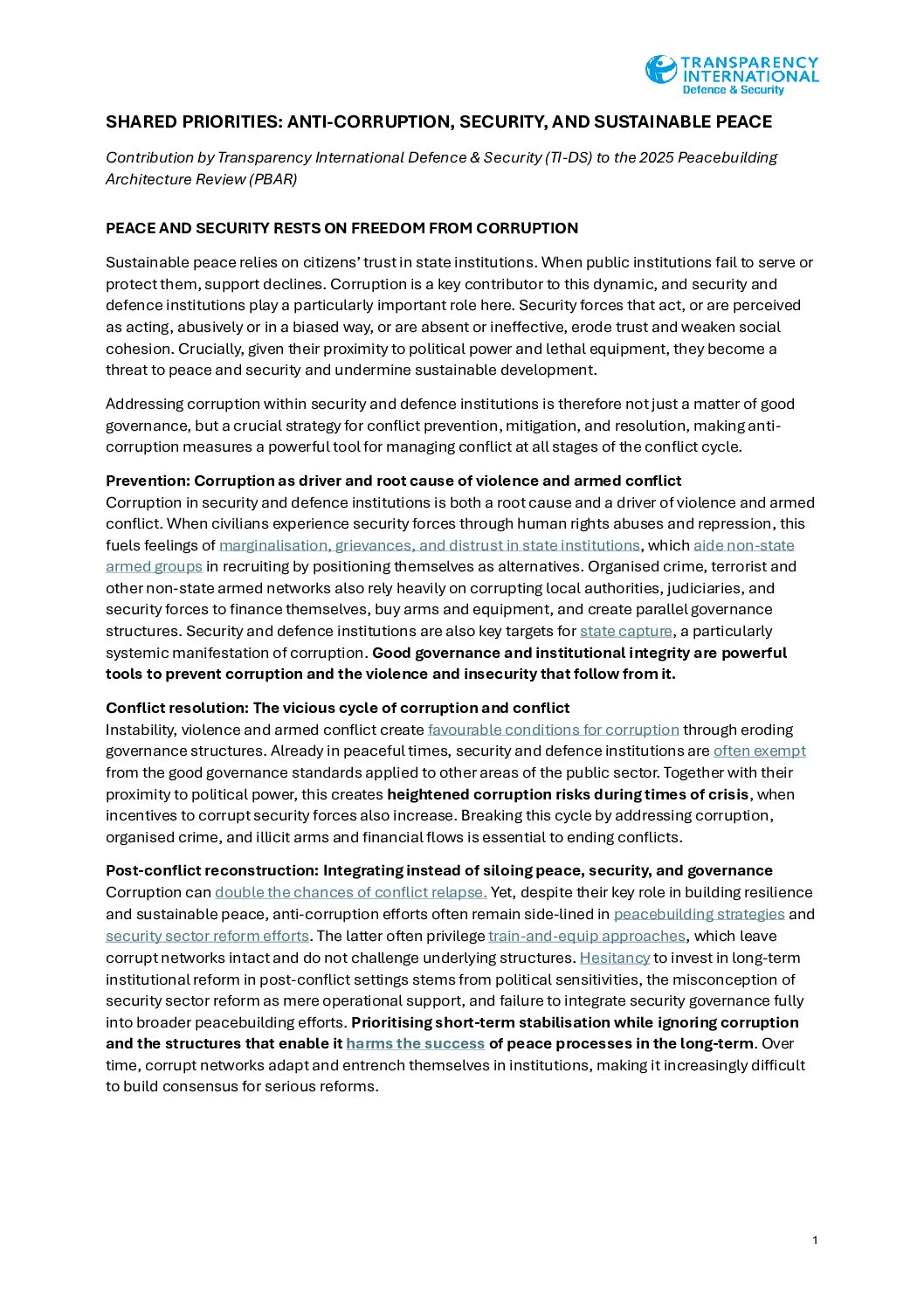Trojan Horse Tactics: Unmasking the imperative for transparency in military spending
Militarisation is back on the agenda. Since the start of Russia’s full-scale invasion of Ukraine, and amidst rising tensions in East Asia, the Middle East and the Sahel, governments around the world have been ramping up their defence spending. Where budgets increase, so does corruption risk, especially when sectors are lacking functioning transparency, accountability, and oversight. Evidence from Transparency International Defence & Security’s (TI-DS) Government Defence Integrity Index 2020 (GDI) clearly shows that most defence institutions around the world do not have the necessary resilience to withstand these risks.
This paper provides an overview of the nexus between corruption and increased defence spending. Studies that have looked into the link between corruption and military expenditure often relied on measures of corruption that were not specific to the sector. This paper aims to change that by utilising data from a tool that captures sector-specific knowledge on corruption risk. It combines data on defence spending from the Stockholm International Peace Research Institute (SIPRI) with indicator scores on institutional resilience to corruption in the defence sector from the GDI. The combination of these data sources offers new insights into the relationship between defence spending and corruption. The findings are of critical importance for all concerned about the implications of rising militarisation.
Download Publication as PDF









